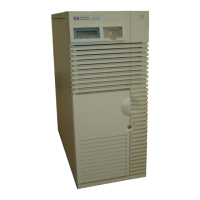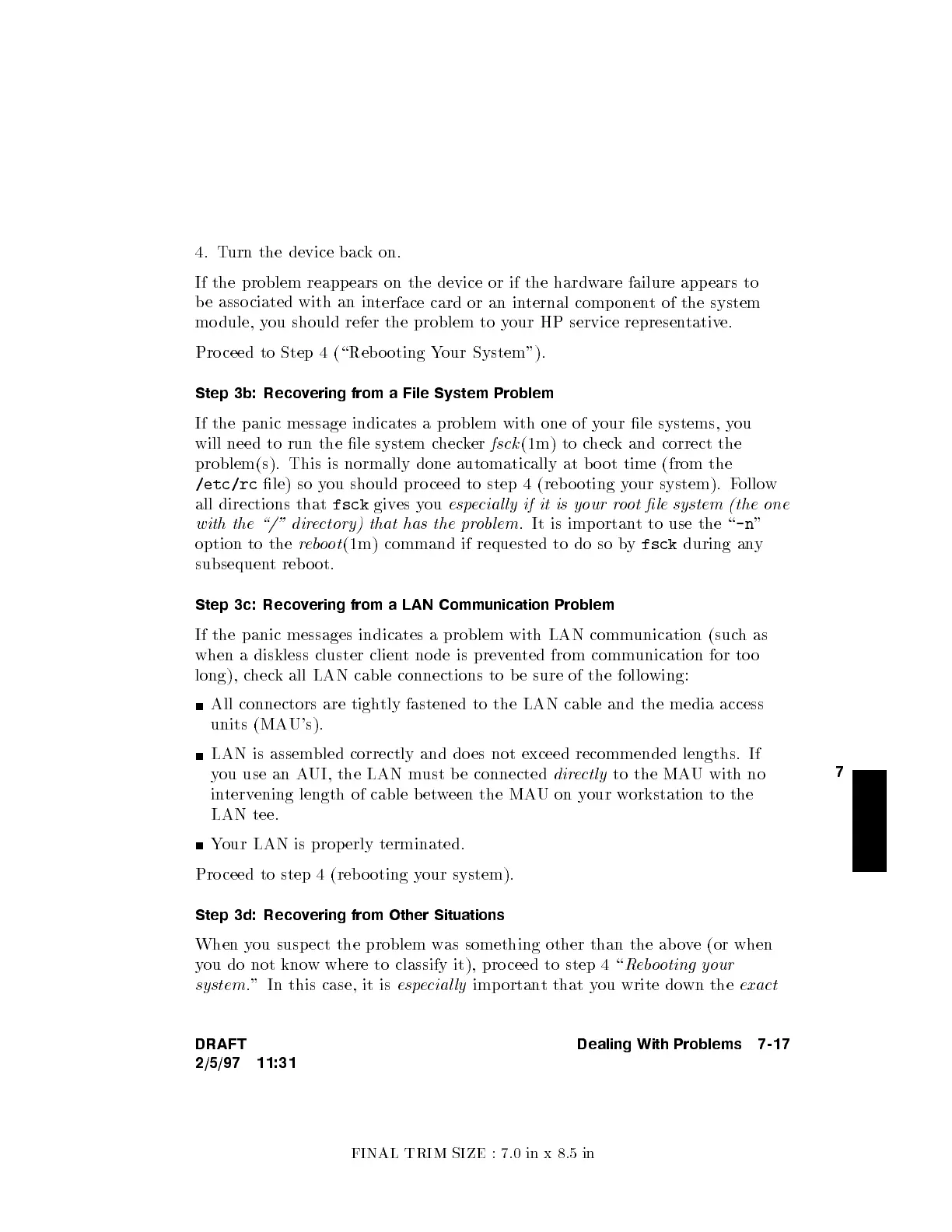FINAL TRIM SIZE : 7.0 in x 8.5 in
7
4. Turn the device back on.
If the problem reappears on the device or if the hardw
are failure appears to
be asso ciated with an in
terface card or an in
ternal comp onent of the system
mo dule, you should refer the problem to y
our HP service representative.
Pro ceed to Step 4 (\Rebo oting Y
our System").
Step 3b: Recovering from a File System Problem
If the panic message indicates a problem with one of y
our le systems, you
will need to run the le system c
hecker
fsck
(1m) to check and correct the
problem(s). This is normally done automatically at bo ot time (from the
/etc/rc
le) so you should pro ceed to step 4 (reb o oting y
our system). Follow
all directions that
fsck
gives you
especial ly if it is your root le system (the one
with the \/" directory) that has the problem
. It is important to use the \
-n
"
option to the
reboot
(1m) command if requested to do so by
fsck
during any
subsequent rebo ot.
Step 3c: Recovering from a LAN Communication Problem
If the panic messages indicates a problem with LAN comm
unication (suchas
when a diskless cluster client node is prevented from communication for to o
long), check all LAN cable connections to be sure of the following:
All connectors are tightly fastened to the LAN cable and the media access
units (MAU's).
LAN is assembled correctly and do es not exceed recommended lengths. If
you use an AUI, the LAN must be connected
directly
to the MAU with no
intervening length of cable b etween the MAUonyour workstation to the
LAN tee.
Your LAN is prop erly terminated.
Pro ceed to step 4 (rebo oting your system).
Step 3d: Recovering from Other Situations
When you suspect the problem was something other than the ab ove (or when
you do not know where to classify it), pro ceed to step 4 \
Rebooting your
system
." In this case, it is
especial ly
imp ortant that you write down the
exact
DRAFT
2/5/97 11:31
Dealing With Problems 7-17

